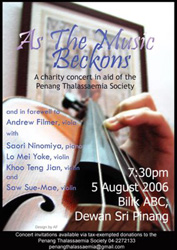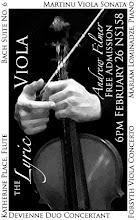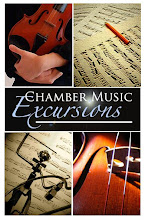I'm really too packed with work to blog, and if I write about my personal life it's possibly going to end up on the depressing side, so I've decided to share my work with you. (My mind is far more interesting than my soul, on paper.) It's either incredibly inspired or in some weird way, cheap-skate to do so, but here it is. This is the introduction to a final paper for one of my courses here at IUSB (minus footnotes), which I'm hoping to submit to a national competition in viola research and eventually extensively expand into doctoral thesis. Under the protections of the Creative Commons license of intellectual property noted in the side bar.
Power Plays in Mozart’s Sinfonia Concertante:
A Question of Philosophies on Genre
For classical instrumentalists, there is rarely a question of democracy within the ranks: quite simply, it almost never exists. In orchestras, the conductor leads the music, in smaller chamber orchestras the concertmaster takes charge, and in most string quartets a primarius is appointed. When a soloist takes the stage, the symphony orchestra’s role – and thus that of the conductor as its leader – is to follow and support. Disruptions to this accepted hierarchy tend to end up with – to put it bluntly – really bad endings.
It is in this context that Mozart’s Sinfonia Concertante for Violin, Viola and Orchestra poses uncertainties of how this leadership hierarchy functions. The sinfonia concertante genre flourished and dissipated in the short span of 60 years, and few of the works survived and remain played today. While the Baroque concerto grosso and the Romantic multiple-soloist concertos may give some indication of how musicians should relate, the issue of connections between these genres is contentious, and role of etymology is complicated since the term comes both from sinfonia (or an expanded form of sonata in Palisca’s definition) and concerto, which itself has complex roots. Besides which, the vast range between how soloists in Bach’ Brandenburg Concerti and those of Beethoven’s Triple Concerto provide some ambiguity as to who takes the lead. The recordings of this work and the information of performers and their views provided in the sleeve notes indicate a wide range of opinion as far as how the power plays can flow, which is an unusual occurrence for classical instrumentalists.
This dynamic goes beyond a simple decision of whether it is the conductor or one of the soloists who decides on matters like tempo and rubato, or whether there is the need for a conductor at all. The choice of a musical philosophy – whether the sinfonia concertante is more sinfonia or more concertante, or evenly so – determines among other things the dynamic range of the performance, the interpretation of connections between the soloists and the orchestra, and even the lengths of phrases and cadential destinations.
Of particular interest is the role of the solo violist: though none of the recordings have a violist in charge, it is conjectured by some that Mozart himself may have played the viola for it’s initial performance, and if this is so, as the composer he would almost certainly have been in a leadership position. The viola solo part alone however, does not give as much support to a claim of violist leadership in the sinfonia concertante; in cases where the orchestra does not require a conductor, the solo violinist becomes the director of the ensemble. Nonetheless, a choice of musical philosophy does determine how the viola part is interpreted even more so than how the violin part is interpreted. This is because of a certain predisposition to assume that the viola is to echo the violin throughout the sinfonia concertante – while the violinist may choose to stand out from the orchestra, in many cases the violist is still seen as dependent on the violinist, instead of standing as an equal. In this respect cases when the violist goes his or her own path is intriguing, and largely dependent on whether the musical approach chosen provides space for it.
There are two main approaches to the sinfonia concertante. One is an emphasis on the concertante aspect, in promoting the concertizing element and treating this work in basically the same way as the double concerto for flute, harp and orchestra, with the orchestra being in a subdued role. Many of the recordings in this fashion come from an emphasis in the celebrity of the performers such as David and Igor Oistrakh, though this is not always the case – Anne-Sophie Mutter chose both her violist and her orchestra, but selected an entirely different approach. A second philosophy is a focus on the sinfonia aspect. In one interpretation there is a look at its roots in the sonata and thus chamber music; in this approach a communicative approach is in effect, with dialogue being the glue of playing, and the soloists and the orchestra acting as equals. In another realization of the sinfonia focus, a look at the title of the work in the original French symphonie concertante leads to a perception of a symphonic approach with soloists attached, which happens mostly out of a human rather than musical source: the case of a conductor who has more celebrity status than the soloists. Regardless of its starting point as academic study or public relations, this approach, as with all the others, brings out certain unusual elements and adds to the richness of diversity in interpreting the sinfonia concertante.
The research embodied in this paper intends to look at these two contrasting philosophies through the ears of five chosen case-studies out of some 20 recordings from 1951 to 2007. While the interest is academically based, this can be of practical application in an awareness of choices musicians make when dealing with Woodley’s “treacherous” genre classifications, in power plays of their own.
Subscribe to:
Post Comments (Atom)






No comments:
Post a Comment